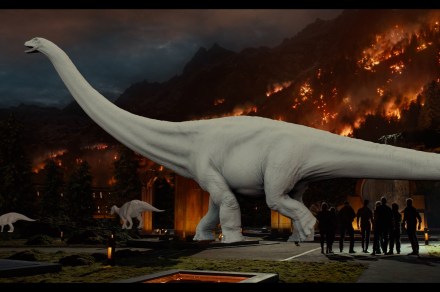
Retired astronaut Chris Hadfield has pointed out how dinosaurs would very much have liked it if NASA had been around when they ruled Earth.
The three-time space visitor isn’t suggesting that the remarkable creatures would’ve tapped NASA for its astronomy knowledge or asked to be sent on long missions to Mars. Rather, he’s highlighting how the space agency could’ve used its technology to save the creatures from extinction.
In a tweet posted on Wednesday, Hadfield puts the spotlight on a bold NASA mission that in just over a week’s time will see its DART spacecraft attempt to change the flight path of an asteroid — Dimorphos — by slamming into it.
In 12 days we're going to try and deflect an asteroid by ramming it – to prove a way to protect Earth. The dinosaurs wished they had @NASA.
Details: https://t.co/3IEALqmry0 pic.twitter.com/prB3OMhcz2— Chris Hadfield (@Cmdr_Hadfield) September 14, 2022
As Hadfield reminds us, the dinosaur community didn’t do at all well when a massive space rock came its way about 65 million years ago. That’s why NASA is hoping that its highly anticipated asteroid collision later this month will demonstrate that it has the right technology to help us earthlings avoid the same fate in the future.
To be clear, the asteroid DART is heading toward presents no risk to Earth, so there’s nothing to worry about. But somewhere down the line, it’s possible that astronomers could spot a whopper that does pose a threat. And with nowhere to hide, our only chance of survival — or at least of avoiding a monumental catastrophe that could damage huge parts of our planet — will be to send a DART-like spacecraft crashing into it in a bid to alter its orbit through kinetic impact. So, fingers crossed, eh.
Earlier this month, DART — short for Double Asteroid Redirection Test — caught its first glimpse of the Dimorphos asteroid that the small-car-sized spacecraft will collide with at a speed of 4 miles per second on September 26.
The 530-feet-wide Dimorphos asteroid is part of a double-asteroid system that includes Didymos, which is about half a mile across.
“The goal of the mission is to determine how much DART’s impact alters the moonlet’s velocity in space by measuring the change in its orbit around Didymos,” NASA said. “Scientists think the collision will change the speed of Dimorphos by a fraction of one percent. It should alter the moonlet’s orbital period around the larger asteroid by several minutes — enough to be observed and measured by telescopes on Earth.”
Taking the threat of Earth impacts seriously, NASA established the Planetary Defense Coordination Office (PDCO) in 2016.
Set up to manage its planetary defense efforts, the PDCO works to provide early detection of potentially hazardous objects (PHOs). It also tracks and characterizes PHOs and issues warnings of the possible effects of potential impacts.
It’s also continuing to research strategies and technologies for mitigating PHO impacts, with its work hopefully ensuring that we don’t end up going the same way as those magnificent dinosaurs.
Editors’ Recommendations
Credit: Source link


Comments are closed.